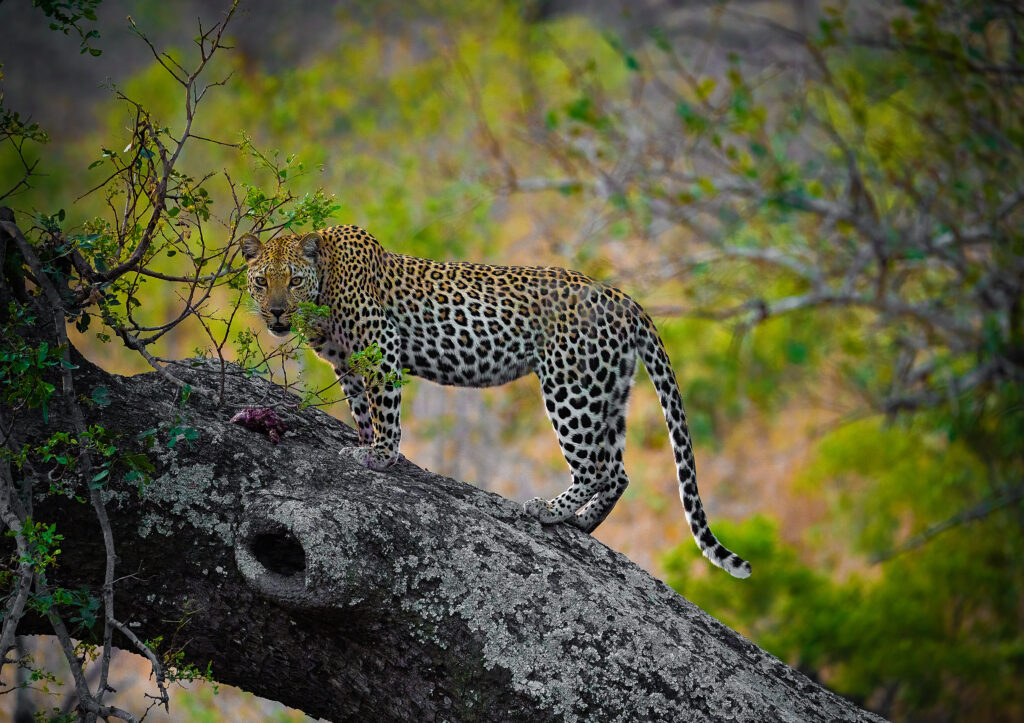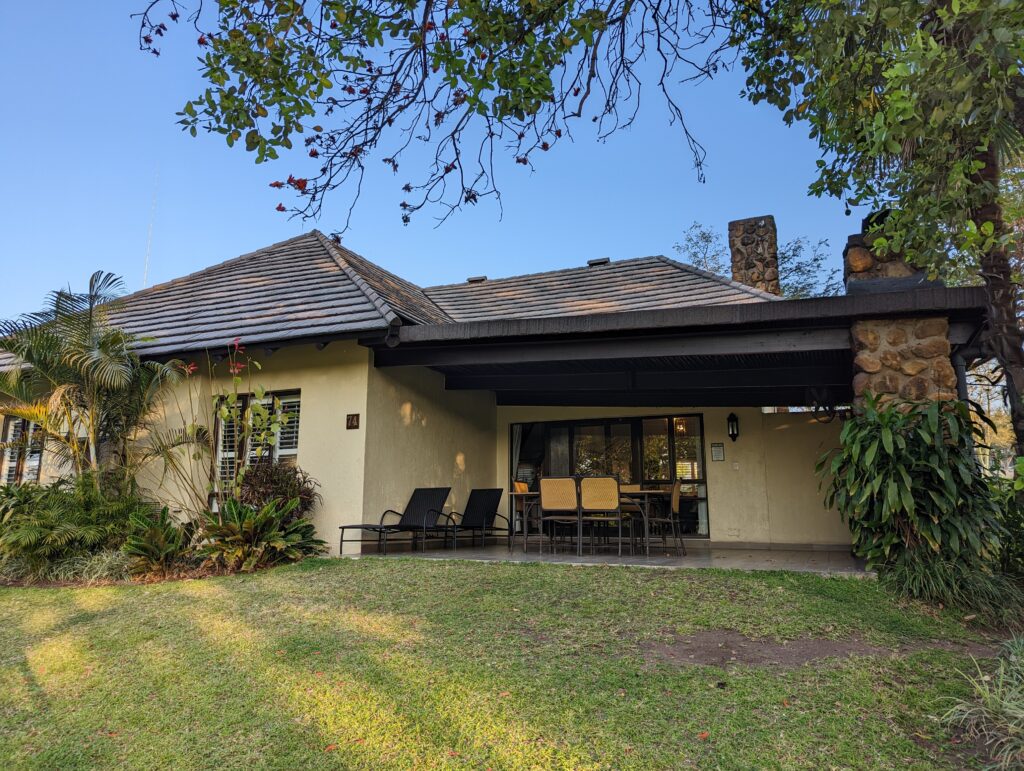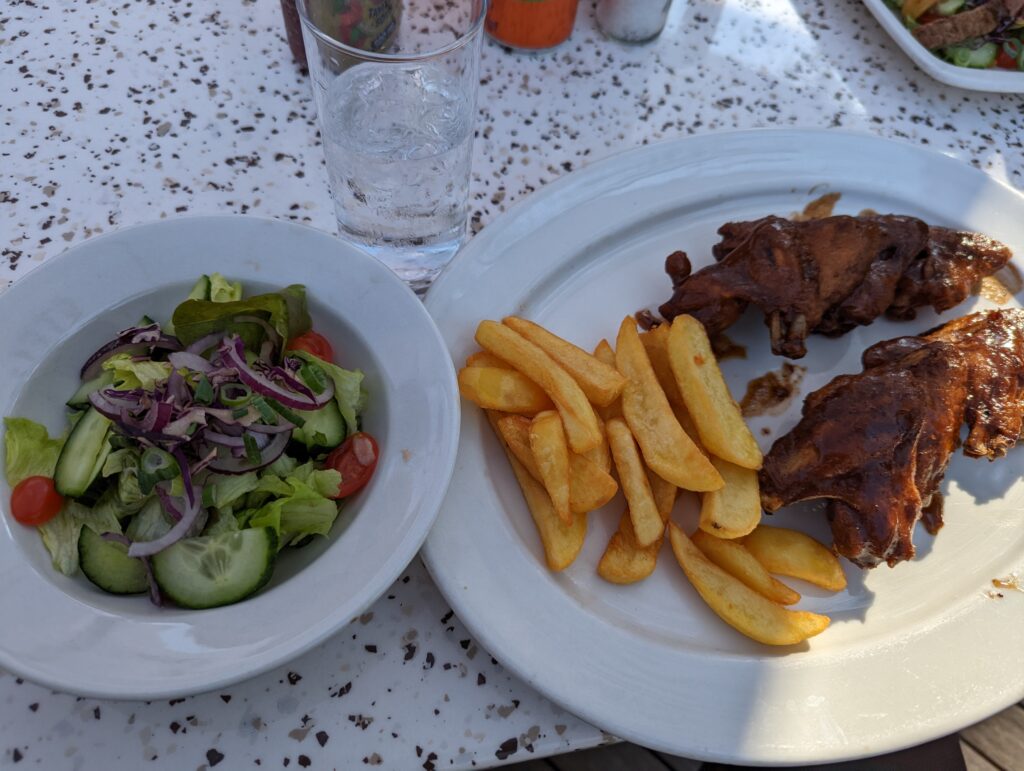Just imagine it. The excitement of the open road. With windows down, the African bush surrounding you fills your senses. No tour bus windows separating you from the wild around you. Only you, your travel companions, and the untamed beauty of Kruger National Park unfolding before you. Experience the magic of a self-drive safari yourself. It is an adventure that puts you in the driver’s seat, literally and figuratively.
Kruger is a name synonymous with incredible wildlife encounters. It offers an unparalleled opportunity to connect with nature on a very personal level. Planning such an experience, however, can be daunting. Even more so if you are on a budget. But do not fear, explorer! The guide that follows will equip you with everything needed to conquer Kruger on your terms. It will include things you often overlook, from choosing the right vehicle and packing essentials to navigating the park like a pro. And you won’t break the bank. So, ditch the tour groups and embrace the freedom. Are you ready to conquer Kruger? Your adventure awaits!

Conquer Kruger's Packing Essentials
The essential first step to any successful adventure, let alone a Kruger one, is packing. Let’s face it, being prepared can make or break the experience. Start with a packing list; your trusty sidekick that ensures you have everything you need ton conquer Kruger comfortably and confidently. Here’s a brief lowdown on what to bring (and what to leave behind):
Essentials:
Documents: Passports, driver’s licenses (international if needed) park entry permits/reservations, and, for the extra precautionary, travel insurance. Make sure all of this is in a safe but easily accessible place.
Clothing: Pack LIGHT. I cannot emphasize this enough. Trust me, your bag (and budget) will thank you. Think of it this way: the less you bring, the more smoothly everything will go. You won’t be lugging around any heavy suitcases. You’ll save on baggage fees. You’ll also have more room in your vehicle for souvenirs (*wink wink*). Be versatile in your packing, choosing items that can be intermixed with one another or layered easily for changing temperatures. Also, neutral colors not only blend in with the environment but also make it easy to create several different outfits with as few different pieces.
Also, ROLL, don’t fold your clothes. Rolling your clothes saves space and prevents wrinkles. If you want to be extra organized, use packing cubes to compress your clothing and keep things in order (though I know from experience that this is a hit-or-miss with many people).
Most importantly, be RUTHLESS. When you are packing, ask yourself “Do I really need this?” If the answer isn’t even close to a definite yes, leave it behind. You can eliminate so much when your honest with yourself about what is truly essential. Remember, you are going on a safari, not a fashion show. Comfort and practicality are your most important priorities. Packing light and strategically will free you to focus on the important things, like having a great experience.
Navigation: Many areas will have cell service. However, not all. Therefore it is wise to download your Google Maps of any and all locations you might even think of visiting.
Gear: Binoculars are a valuable resource. They are an extension of your eyes in the bush. A good pair will make your wildlife viewing experience far more exciting. Also, CAMERAS! Do NOT forget your camera (as well as lenses, EXTRA batteries and memory cards, and charger). A telephoto lens in particular is a must-have for conquering Kruger’s wildlife photography.
First-Aid/Protectants: Pack the essentials like bandages, pain relievers, antiseptic wipes, and any personal medications. Sunscreen, sunglasses, and hats are also crucial for protecting yourself from the African sun. If you go during the wet season, mosquitoes and other creepy crawlies can be prevalent, so make sure you have some decent insect repllent.
Water: This seems like a given, but you never know. Staying hydrated is essential, especially during long game drives. You want to conquer Kruger, not have Kruger conquer you!
Other Tools: Car chargers are a must. You’ll want to keep your phone charged for navigation and communication. Also, headlamps or flashlights will come in handy should you go for a night game drive or be staying at campsites. Cooler bags could also come in handy to keep your food and drinks cool throughout the drive.
Optional Extras:
Wildlife Guide: Kruger is a wildlife haven. Various guides may be desired to help identify the diverse species you will likely come across.
Portable Power Bank: This is handy and a lifesaver for charging devices on the go if you are away from your car for a period of time.
LEAVE BEHIND:
Expensive Jewelery: There is no need to attract unwanted attention or risk misplacing. Also, once again, not a fashion show.
Brightly Colored Clothing: This is debatable since most of your time will be spent in the vehicle, but keep it in mind as it could startle wildlife.
Unnecessary Gadgets: Just stick to the essentials to keep your luggage lightweight.
By packing smart and strategically, you will be more than well-prepared to conquer Kruger and take on anything that this adventure throws your way.
Your Landing Pads: Flights and Airports
Kruger National Park doesn’t have its own international airport, but it does have a smaller, private airport. It offers daily, but limited, flights to and from Cape Town and Johannesburg. However, only 20 flights per day are allowed, so it may be difficult to find a flight directly into the park.
The most likely airport you’ll utilize is the Kruger Mpumalanga Internatioanl Airport (MQP). It is the most convenient option, as it has plenty of flights and is only a short drive from the southern gates of the park. There are a range of both domestic and international flights and connections available.
Another good, close-in-proximity-to-Kruger option is Nelspruit Airport (NLP), but it mainly handles domestic flights. Similarly, there are the Hoedspruit Eastgate Airport (HDS) and Phalaborwa Airport (PHW), both of which are on the small side and, again, only domestic. But, they can all be convenient from within South Africa if planning to explore the part of the park they are near.
From any of these airports, you can easily rent a car and get driving to start your journey to Kruger. There are also several shuttle companies that offer transfers from the various airports to Kruger National Park. This is a great option if you don’t want to drive yourself, but implies that you’ll have to splurge on tours and game drives the majority, if not entirety, of your trip.
Conquer Kruger's Roads: Selecting the Right Vehicle for Your Kruger Safari
Let’s talk about your trusty steed for this adventure – your vehicle! Choosing the right set of wheels is just as important as packing your binocs and sunscreen. It isn’t just about getting from point A to point B. It’s about navigating the diverse roads of Kruger. You also want to maximize your wildlife viewing opportunities while, of course, being comfortable and safe.
4×4 vs 2×4:
This is the million-dollar question. A 4×4 vehicle will offer superior traction and ground clearance. This is ideal for navigating the park’s rougher roads and venturing into more remote areas. However, they are also more expensive and often consume more fuel. A 2×4 vehicle is definitely more budget friendly and very much capable for the vast majority of Kruger. If you’re content sticking to the main roads, then a 2×4 is perfect.
Features:
No matter the wheel drive you choose, there are some key features to take into consideration.
High Clearance: Kruger’s roads are bumpy, even when maintained. A vehicle with good clearance will prevent you from scraping the undercarriage.
Good Visibility: Large windows and a comfortably high seating position will allow you better opportunity to spot wildlife.
Reliability: Choose a well-maintained vehicle, from a reputable rental company, to avoid breakdowns or issues.
Budget/Other Tips
Book in Advance: Rental rates increase the closer you are to your travel dates, so book well in advance, especially during peak season.
Shop Around: Smaller, local rental companies often have more competitive rates than the larger more international chains. You may even find a discount, whether it be through travel insurance, a credit card, or a membership.
Fuel Costs: Fuel is expensive. Period. So take that into consideration when you budget for your trip and when picking your vehicle.

Kruger Crash Pads: Where to Stay
Let’s face it, even the most adventurous explorer needs a good night’s sleep. And the best part? Kruger offers a very wide range of accommodations to suit every budget and travel style you can think of. Whether it be camping, chalets, rest camps, or lodges, there’s no reason you cannot find an appropriate place to lay your head.
Camping Under the Stars
Now, this might be for the most adventurous soul. Or the cheapest. I’ll let you decide. But, if you’re looking t truly immerse yourself in the Kruger experience, camping is the way to go. Imagine falling asleep to the sounds of the African bush. The distant roar of a lion. Crickets chirping and the rustling of leaves. A clan of hyenas laughing away. SANParks offers a wide variety of campsites within the park, from basic pitches to more developed sites. Regardless of which one you choose, this is the most budget-friendly way to stay inside Kruger. Just be prepared for some close encounters with nature!
Chalets and Huts
For those looking for a little more comfort than camping, without breaking the bank, huts and chalets are great. They give you a private space with some basic cooking facilities, so you can save money with your own meals. They’re great for families or those who want more privacy than camping might offer.
Rest Camps
The mini-villages of Kruger. These give a variety of accommodation options, including basic huts to luxurious bungalows. The rest camps typically offer communal facilities such as restaurants, shops, and pools. They provide convenience, especially if you don’t always want to cook your meals.
Lodges and Guesthouses
If you don’t want to stay within Kruger itself, you can find all sorts of lodges and guesthouses, for every budget. Many even offer shuttle services to the park, allowing for easy access to game drives.
Other Notes:
Much like with the rental car situation, make sure to book in advance, check for specials, and consider the time of year you plan to visit. Choosing the right accommodation is a crucial part of planning your self-drive safari.

Dining on a Dime
Now, let’s dive into the delicious details of dining in Kruger! Because let’s face it, a rumbling tummy can put a damper on even the most epic safari. And the great news is, you can savor the flavors of Kruger without emptying your wallet. It’s all about a little planning and some savvy choices.
Self-Catering:
Self-catering is your secret weapon for budget-friendly feasting in Kruger. Think of it as your own mobile kitchen, allowing you to whip up delicious meals without the restaurant price tag. Here’s how to make the most of it:
Embrace the Braai: A braai (barbecue) is a South African institution, and it’s the perfect way to enjoy a delicious and affordable meal in Kruger. Pack some boerewors (sausage), steaks, or chicken, and cook them over the coals under the African stars. Many campsites and chalets have braai facilities, making it super easy to create a feast. Just remember to bring your own charcoal and firelighters!
Plan Your Meals: Before you even set foot in Kruger, plan your meals for the duration of your trip. This will help you create a shopping list and avoid impulse buys at the park’s more expensive shops.
Stock Up Outside the Park: Groceries inside Kruger tend to be pricier, so it’s a smart idea to stock up on supplies at a supermarket outside the park before you enter. There are plenty of shops in nearby towns where you can get everything you need.
Pack Smart: Focus on non-perishable items like pasta, rice, canned goods, and snacks. Think about easy-to-prepare meals like pasta salads, sandwiches, or one-pot stews. A cooler bag will be your best friend for keeping things fresh.
Restaurants:
While self-catering is the most budget-friendly option, it’s okay to treat yourself to a restaurant meal now and then. Just be mindful of the prices and choose wisely. Many rest camps have restaurants offering a variety of dishes, so you can still experience some South African cuisine without breaking the bank. Look for specials or set menus to save some cash.
Picnic:
Packing a picnic lunch for your game drives is a game-changer (pun intended!). It’s a much cheaper option than buying food at the rest camps, and it allows you to enjoy a meal amidst the stunning scenery. Think sandwiches, salads, fruit, and some tasty snacks. A thermos of coffee or tea can also be a welcome addition, especially on early morning game drives.
Hydration:
Staying hydrated is absolutely crucial in Kruger’s heat. Bring reusable water bottles and fill them up whenever you have access to clean water. This is not only good for your health but also for your wallet (and the environment!).
With a little planning and some savvy choices, you can savor both the stunning scenery and the delicious flavors of South Africa without emptying your wallet. Now, are you ready to talk about the real reason you’re going to Kruger – the incredible wildlife?

Conquer Kruger's Wildlife
Okay, buckle up, because we’re about to embark on the heart of your Kruger adventure – the game drives! This is where the magic happens, where you get to witness the incredible wildlife that makes Kruger so special. But spotting those elusive creatures isn’t just about driving around aimlessly. It takes a bit of strategy, some insider knowledge, and a whole lot of patience. So, let’s dive into the secrets of successful game drives and how to maximize your chances of encountering Kruger’s iconic residents.
Timing:
The early bird gets the worm, and in Kruger, the early riser gets the best wildlife sightings! Mornings and late afternoons are prime game-viewing times. During these cooler periods, animals are more active, either hunting, foraging, or simply enjoying the milder temperatures. The midday sun can be harsh, causing many animals to seek shade and become less visible. So, set your alarm clock and embrace those early mornings – you won’t regret it!
Navigation:
Kruger is a vast park, but navigating it is easier than you might think. Here are a few tips to help you find your way:
Maps and Apps: Grab a park map at the entrance gate or download a Kruger-specific app on your phone. These resources will show you the various roads, waterholes, and rest camps.
Sighting Boards: Check the sighting boards at rest camps and other key locations. These boards are updated by visitors and rangers, indicating recent animal sightings. They can be a valuable tool for finding specific animals.
Waterholes: Waterholes are like oases in the bush, attracting a variety of animals. They’re great places to park your car and wait patiently for animals to come and drink.
Road Networks: Kruger has an extensive network of roads, but not all roads are created equal. Some roads are busier than others, and some offer better wildlife viewing opportunities. Ask rangers for recommendations on good routes to explore.
Wildlife Etiquette:
Remember, you’re a guest in Kruger, and it’s essential to respect the animals and their habitat. Here are some key etiquette guidelines:
Maintain a Safe Distance: Keep a respectful distance from animals. Don’t approach them too closely or try to interact with them.
Minimize Noise: Keep noise levels down to avoid disturbing the animals. Turn off your car radio and speak quietly.
No Feeding: Never feed the animals. This can disrupt their natural behavior and make them dependent on humans.
Stay in Your Vehicle: Unless you’re in a designated picnic area or rest camp, stay inside your vehicle. It’s safer for you and the animals.
Respect Boundaries: If an animal appears stressed or agitated, move away and give it space.
Patience:
Wildlife viewing requires patience. Sometimes you’ll spot animals right away, and sometimes you’ll have to wait. Don’t get discouraged if you’re not seeing anything immediately. Be patient, enjoy the scenery, and appreciate the smaller details of the bush. The rewards of patience can be truly spectacular.
With a little planning, some insider tips, and a whole lot of respect for nature, your game drives in Kruger are sure to be unforgettable. Now, don’t forget to capture those incredible moments with your camera!

There You Have It
Alright explorer! Your Kruger adventure awaits, and it doesn’t have to cost a fortune. With a little planning, some savvy choices, and a spirit of adventure, you can experience the magic of Kruger National Park on your own terms, without breaking the bank. From choosing the right vehicle and packing smart to mastering the art of the game drive and capturing stunning photos, you’re now equipped to conquer Kruger like a pro. Remember, the true beauty of Kruger lies not just in its iconic wildlife, but also in the freedom of exploration, the thrill of discovery, and the unforgettable memories you create along the way. So, pack your bags, grab your map, and get ready to embark on the safari of a lifetime – your budget-friendly Kruger adventure starts now!


Keep up with my latest adventures in Adventures Unpacked! A newsletter for the wanderlust-filled adventurer with news on my latest journeys, travel and photography tips, and more!